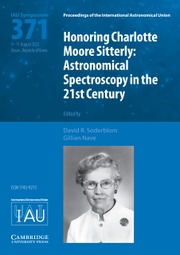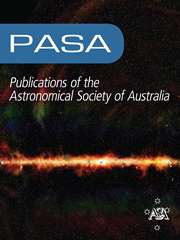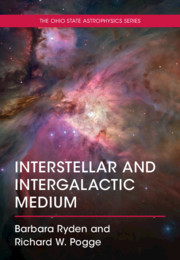Celestial and Stellar Dynamics
c.£29.99
- Author: Barbara Ryden, The Ohio State University
- Publication planned for: January 2025
- availability: Not yet published - available from January 2025
- format: Paperback
- isbn: 9781108819015
c.£
29.99
Paperback
-
Although the field of celestial dynamics – the application of Newtonian dynamics to systems with a relatively small number of celestial bodies – is centuries old, it has been reinvigorated by the discovery of thousands of exoplanetary systems orbiting other stars. This textbook uses the properties of planetary systems, including own Solar System, to illustrate the rich variety of behavior permitted by Newton's law of gravity. The textbook then expands its view to examine stellar dynamics – the study of systems containing a very large number of stars or other celestial bodies. The different techniques used for celestial dynamics and stellar dynamics are compared and contrasted. However, throughout the text, emphasis is placed on the underlying physics that applies on scales as small as the Earth–Moon system and as large as a cluster of galaxies. It is ideal for a 1-semester astrophysical dynamics course for upper-level undergraduates and starting graduate students.
Read more- Covers both celestial dynamics and stellar dynamics, which are often taught separately despite being based on the same principles of Newtonian gravity
- Focuses on key physical processes for a concise, focused coverage, avoiding topics that are only of real interest to specialists
- Mathematical derivations are complemented with physical intuition and motivated by order of magnitude calculations, allowing students to understand why certain effects are important, and what causes them
- Integrates observational results with the theoretical calculations, using a wide range of examples, giving students a better understanding of how the field developed, as well as a broader astrophysical context
Customer reviews
Not yet reviewed
Be the first to review
Review was not posted due to profanity
×Product details
- Publication planned for: January 2025
- format: Paperback
- isbn: 9781108819015
- length: 250 pages
- dimensions: 244 x 170 mm
- availability: Not yet published - available from January 2025
Table of Contents
Preface
1. Newtonian Dynamics
2. Three-body Systems
3. Resonances and Chaos
4. Tides
5. Exoplanetary Systems
6. Many-Body Systems
7. Orbits
8. Collisionless Stellar Systems
9. Encounters Between Stellar Systems
10. Relaxation and Collisional Systems
Appendix A: Constants and Units
Further Reading
References
Figure Credits
Index.
Sorry, this resource is locked
Please register or sign in to request access. If you are having problems accessing these resources please email [email protected]
Register Sign in» Proceed
You are now leaving the Cambridge University Press website. Your eBook purchase and download will be completed by our partner www.ebooks.com. Please see the permission section of the www.ebooks.com catalogue page for details of the print & copy limits on our eBooks.
Continue ×Are you sure you want to delete your account?
This cannot be undone.
Thank you for your feedback which will help us improve our service.
If you requested a response, we will make sure to get back to you shortly.
×




